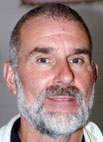
Roger Kathka started life in northwest Kansas. “I think I’ve always had cows since I was about five years old,” he stated with a grin while feeding his 40 cow-calf pairs in rural southern Dallas County. His family moved to a farm outside Collins, Mo., when he was a teen and he finished school at Weaubleau. He went on to earn a degree in industrial technology at what was then Southwest Missouri State, now Missouri State University. Today, he resides just north of Springfield, Mo., with his wife, Karen. Both are retired teachers from the Fair Grove school system where Roger taught industrial arts and Karen was an art teacher.
His current herd is half commercial cows and half registered Gelbvieh. He owns 100 acres in rural southern Dallas County and rents another 30 near his home, which is most convenient for heifers that are about to calve. “About 10 years ago, I was thinking about replacing my Angus bull. I was researching different Continental breeds to use on my mostly Angus-based commercial cows. I was back in Kansas visiting a cousin and looking at his cattle. He was using a Gelbvieh bull and was quite pleased with it and I was impressed by the calves. I got to checking and found a market for Gelbvieh cross bred heifers and they were fetching the same price as steers. After my first calf crop, I was really impressed. The calves were heavier and from there, I bought six registered heifers and then started using A.I. (Artificial Insemination) to improve my herd. It’s been working out real well.”
The Gelbvieh line was originally developed in Bavaria and introduced to the United States approximately 40 years ago through genetics and A.I. programs. Roger is a member of the Heart of America Gelbvieh Association. Roger has put some of his heifers in the association’s futurity class which sells the animals for 4-H and FFA members to show. “I break them to lead and they have to be a nice gentle stock for the kids to work with. It’s a good place to market the females,” Roger added.
“I’ve marketed my bulls through the Green Spring Test Station in Nevada, Mo,” he continued. “They take in all breeds of cattle and you get a lot of information back on feed efficiency, ultra sound data and the like. This year I’ve had a lot of private treaty calls so I’m thinking I may just go ahead and do the marketing myself on the bulls.”
Much as Roger enjoys his time with the cattle, this year has been bittersweet compared to the past. “I lost my dad this year,” he concluded in a softer voice. “He raised cattle, did some wheat farming back over in Kansas, and a little real estate. I learned a lot about cattle, working with my dad but I never had his eye for looking over a cow. I have to use EPDs (Expected Progeny Difference, an estimate of an animal’s genetic merit for producing future progeny) and other numbers to know what I’m looking at. He could just look at ‘em and know if it was a good cow or not.”







